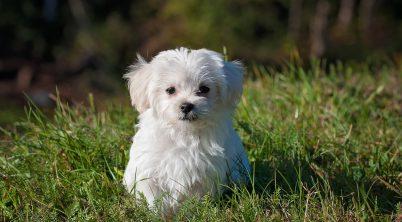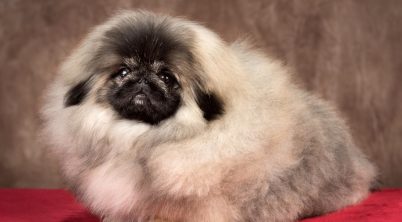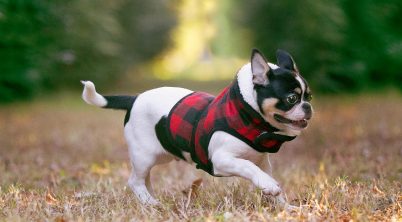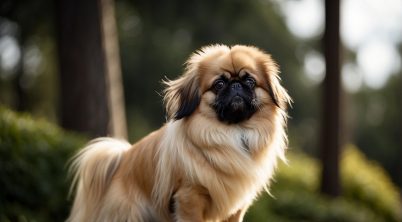The Pekingese, an ancient breed hailing from China, is a dog that exemplifies nobility and charm. Historically treasured by Chinese royalty, these dogs are known for their distinctive lion-like mane and a loyal, affectionate nature towards their families. Despite their small size, they carry themselves with a dignified presence that belies a spirited and independent character.
Regarding prey drive – the instinctual inclination to chase and capture prey – the Pekingese has it to some extent. While they were not specifically bred for hunting, the Pekingese does possess a moderate level of prey drive, which may manifest as chasing small animals or moving objects. However, this trait is generally more subdued when compared to other breeds that have a strong historical background in hunting or herding.
Their prey drive notwithstanding, these dogs are more inclined to be companions than hunters in the modern day. This is largely due to their adaptation to a more domesticated lifestyle over centuries. Consequently, while a Pekingese may show an interest in smaller creatures, it typically fits well into a family environment, contributing loyalty and affection in abundance.
Understanding Prey Drive in Pekingese
The Pekingese, a toy breed with a regal history, exhibits prey drive characteristics inherent to its lineage. Despite their small stature, they carry the instinct to chase, which is an integral part of understanding their behavior.
The Nature of Prey Drive
Prey Drive refers to a dog’s inclination to pursue and sometimes capture prey, a trait rooted in their ancestral need for survival. In Pekingese, this drive is usually exhibited through the desire to chase after small moving objects or animals, though it is generally less intense than in larger, more predatory breeds. It manifests in behaviors such as quick sprints towards moving stimuli, which may resemble playfulness to the casual observer.
- Low to Moderate Prey Drive: Typically, a Pekingese displays a lower scale of prey drive when compared to hunting or herding dogs.
- Chasing Tendencies: Small rodents or birds may trigger their predatory instincts, although the drive is not as pronounced as it could be in other breeds.
Comparing Pekingese Prey Drive to Other Breeds
When examining the Pekingese’s prey drive, it’s evident that it is tamer relative to other dogs, especially those bred specifically for hunting or working.
High Prey Drive Breeds like greyhounds or terriers exhibit intense predatory behaviors, where the chase is a paramount instinct. In contrast, Pekingese have a more subdued response, their compact size and breeding history grooming them for companionship over predation.
- Predatory Instincts: While a greyhound might relentlessly pursue a target, a Pekingese may exhibit brief spurts of interest before returning to a calmer state.
- Strength of Drive: Pekingese may engage in chasing toys or playful running, but with a stronger focus on companionship, the drive appears more as mild entertainment rather than a profound predatory impulse.
Through understanding the nature of prey drive and noting how it compares across breeds, the Pekingese stands out with its lower intensity, mirroring its historic role as a lapdog rather than an active hunter.
Physical Attributes and Prey Drive
In appreciating the Pekingese breed’s prey drive, it’s essential to consider how their distinctive physical attributes may influence this trait.
Size and Prey Drive Relevance
The Pekingese is a small toy breed, typically weighing between 7 to 14 pounds (3 to 6 kilograms) and standing about 6 to 9 inches (15 to 23 centimeters) tall at the shoulder. Despite their diminutive size, they possess a certain tenacity and spirited personality that could affect their prey drive. However, the breed’s small stature means they are less likely to physically pursue prey with the same vigor as larger hunting breeds.
Brachycephalic Breeds and Hunting Ability
Being a brachycephalic breed, Pekingese dogs have flat faces which can lead to breathing difficulties due to their compacted nasal passages. Their sturdy build gives them a sort of robustness, but their double coat, dense with fur, is prone to shedding, and may require regular maintenance. Furthermore, while their coat may protect them to a degree in varied climates, the potential for breathing problems possibly limits their endurance in pursuing prey or engaging in sustained physical activity that would be indicative of a high prey drive.
Behavioral Traits and Training
The Pekingese possesses a distinct personality and temperament that necessitates a specialized approach to training. These dogs might exhibit a low prey drive but maintaining consistent training and proper behavioral management is crucial for a well-adjusted pet.
Managing Pekingese Temperament
The Pekingese is known for being loyal and affectionate with its family, displaying a confident persona. Generally, the breed shows a low to moderate prey drive, largely consistent with the 30.9 percent statistic mentioned. They are, however, prone to display stubborn tendencies, making consistent training and mental stimulation vital to prevent undesirable behaviors.
Socialization is imperative for the Pekingese to foster a well-rounded temperament. Introducing them to various environments, people, and other animals can significantly reduce any potential negative reactions to stimuli and reinforce attention to their owners over distractions.
Training Techniques for Low Prey Drive
Training a Pekingese requires patience, as they can exhibit a stubborn streak that challenges their trainers. However, their loyal nature means they respond well to positive reinforcement techniques such as:
- Rewards: Treats, praise, and playtime encourage the desired behavior.
- Consistent Commands: Simple, clear instructions reinforce learning.
- Short Sessions: To accommodate their smaller attention spans.
Further, because these dogs may not exhibit a strong urge to chase, training exercises should focus more on obedience and social skills rather than those related to prey drive mitigation. For instance:
- Recall: Vital for safety, it ensures the Pekingese returns when called.
- Leash Training: Teaches them to walk politely without being driven to chase.
It’s crucial to implement training that also provides ample mental exercise to keep them engaged, such as puzzle toys and new commands or tricks, catering to the Pekingese’s need for mental stimulation and attention.
Interactions With Other Animals
In considering the Pekingese and their interactions with other animals, it’s important to evaluate both their potential for social harmony with other pets and their instinctual prey drive, particularly towards smaller creatures.
Socializing Pekingese with Other Pets
The Pekingese, not traditionally bred to hunt but rather as a companion, can coexist peacefully with other pets, given proper introduction and training. Early socialization is crucial to prevent aggressive or fearful behavior. Introducing a Pekingese to other domestic animals, especially dogs and cats, should be managed with care, reinforcing positive behavior to foster a harmonious relationship.
Predatory Behavior Towards Smaller Animals
Despite not being bred specifically for hunting, Pekingese may exhibit prey drive tendencies towards smaller animals like squirrels, birds, and rodents. This behavior is rooted in their ancestry and can manifest as chasing or fixating on these smaller creatures. To ensure the safety of all animals involved, Pekingese owners should be vigilant when their pets encounter potential prey species, using controls such as leashes and fenced areas to prevent unwarranted pursuits.
Safety Measures and Precautions
To ensure the well-being of a Pekingese, owners must prioritize safety measures that specifically cater to the breed’s prey drive. These precautions reduce the risks of escape or injury during instances of sudden chase impulses.
Secure Fencing and Supervision
A fenced area is essential for a Pekingese to explore safely. Owners should ensure that their yard has a secure fence to prevent the dog from escaping when it spots something intriguing. The fencing must be high enough to prevent jumping over and have no gaps to sneak through. Supervision is also crucial, especially in areas where small animals are likely to entice the dog’s instincts.
- Features of a Secure Fence:
- Height: At least 5 feet to prevent jumping
- Gap Check: No wider than 1-2 inches to prevent slipping through
- Durability: Strong materials resistant to weather and wear
Leash Training and Outdoor Safety
Leash training is a non-negotiable aspect of owning a Pekingese. It not only keeps the dog safe but also ensures the safety of other animals and passersby. Owners should use a sturdy leash and maintain a firm grip during walks. This training teaches the Pekingese to resist its natural impulses and behave appropriately when it encounters potential triggers outside the home.
- Leash Training Tips:
- Consistency: Daily practice in a variety of settings
- Commands: Use clear and concise commands to maintain focus
- Reinforcement: Positive reinforcement when the dog displays control over its instincts
* Banner by DM, cropped | Some rights reserved.








